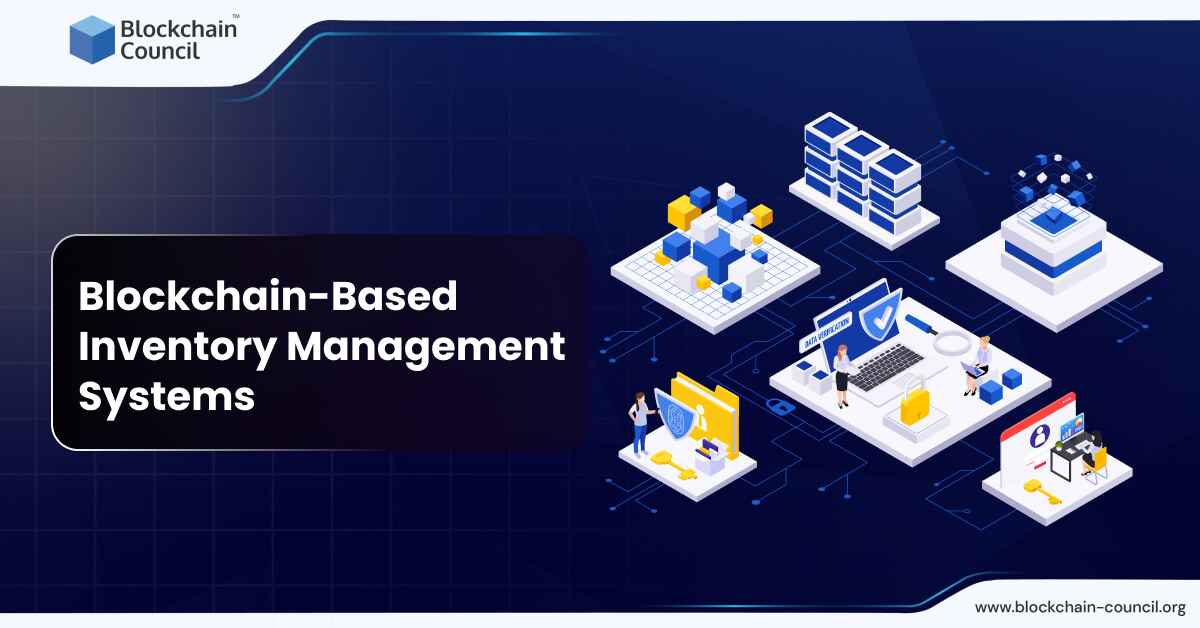
- Blockchain Council
- August 27, 2024
Inventory management is a critical business function that involves monitoring and regulating a company’s supply of items and supplies. Regardless of your sector, proper handling of items throughout their lifespan is critical to maintaining corporate efficiency. However, due to the complexities of supply chain management, you may struggle with timely replenishment and other related activities.
Fortunately, the introduction of blockchain technology simplifies procedures. For example, blockchain solves a variety of inventory management issues in the supply chain. Continue reading to discover more about how blockchain technology might improve inventory management.
What is blockchain inventory management?
Blockchain inventory management is a system that uses blockchain technology to monitor and manage inventories. It tracks every product’s route from manufacture to the consumer’s hands. Similarly, this solution uses the underlying technology to improve inventory management transparency, security, and immutability.
Blockchain inventory management provides higher levels of accuracy and security than conventional solutions. Blockchain in inventory management not only simplifies processes, but it also reduces the risk of mistakes and fraud, therefore improving the efficiency of your supply chain.
How blockchain inventory works
The procedure starts with the development of one digital block per product. Each block provides critical information on the item’s origin, manufacture date, and key touchpoints throughout the supply chain. These individual blocks are connected to build an immutable ledger that monitors and validates the whole product life cycle, from manufacture to distribution.
Unlike conventional approaches, this system lacks a central authority. You and the necessary partners in the supply chain have access to the data and must agree to validate each entry added to the block. This decentralized model promotes openness and trust among stakeholders.
Then, all stakeholders update the digital ledger in real time with information such as shipment status, quality checks, and storage conditions. These metrics provide you with reliable and fast information on the product’s location and condition. You may also discover and handle issues that originate from a specific source.
UI/UX design is also critical for the effective adoption and use of blockchain-based inventory management systems in manufacturing and warehousing. By simplifying complicated processes, decreasing mistakes, boosting productivity, and enhancing accessibility and usability, UI/UX design in manufacturing and warehousing may help guarantee that these systems are efficient and useful to all parties involved.
The key benefits of blockchain inventory management
Incorporating blockchain into inventory management systems provides multiple benefits for optimizing your supply chain and its varied components.
Lower inventory tracking expenses
Automating inventory tracking using blockchain technology not only saves you labour expenses, but it also minimizes the risk of costly mistakes, such as miscalculations or discrepancies in stock levels. This efficiency in tracking and managing inventory effectively contributes to cost savings across the entire supply chain.
Automating inventory monitoring using blockchain technology not only saves money on labor, but it also reduces the chance of expensive errors such as miscalculations or stock level disparities. This efficiency in controlling and managing inventories translates to cost reductions across the supply chain.
Increased trust and teamwork
In a blockchain-based system, everyone has access to the same information. As a result, you may decrease misunderstandings and arguments, both of which can be time and resource intensive. Blockchain’s openness and immutability provide a safe environment in which you and your stakeholders may share information and coordinate actions.
Quicker reaction times and better tracking
Blockchain-based inventory management solutions provide real-time updates, allowing you to quickly detect and handle crucial concerns such as raw material shortages. Because the system instantaneously records each contact, from raw material procurement to manufacture and distribution, you can pinpoint the precise position and condition of items, detect any bottlenecks or delays, and swiftly mobilize personnel to alleviate the supply deficit.
Significantly increased accountability and transparency
As previously stated, each transaction has a matching record on the blockchain, making it readily traceable and attributed to the appropriate participant. Furthermore, blockchain enables all stakeholders to have access to the same information, boosting transparency and confidence. This degree of responsibility and transparency decreases the risk of disagreements and allows you to quickly pinpoint the source of the problem.
Strong inventory security
Blockchain’s decentralized structure necessitates agreement among transmitter nodes before validating inventory transactions, making record tampering very difficult. Similarly, blockchain reduces the dangers associated with conventional centralized systems, which include a single point of failure. Blockchain-based solutions also use encryption methods to safeguard critical inventory data from unauthorized access and hacks.
Reduced operational downtime
Unlike conventional systems that depend on a central authority, blockchain is based on a network of nodes. This distributed method increases the system’s resilience and reliability. Regardless of whether one portion of the network encounters troubles or outages, the remainder of the system continues to function with minimum interruptions in inventory management activities, ensuring supply chain process continuity.
Conclusion
Effective inventory management is a typical difficulty for firms in many sectors. However, the emergence of blockchain technology allows for a more simplified inventory management procedure. Understanding how to implement this technology into inventory management allows you to optimize your supply chain trip for a more efficient and smoother flow of items.





































































 Guides
Guides News
News Blockchain
Blockchain Cryptocurrency
& Digital Assets
Cryptocurrency
& Digital Assets Web3
Web3 Metaverse & NFTs
Metaverse & NFTs
